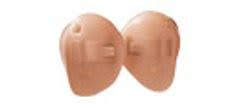Digital hearing aids
 What is a digital hearing aid? What does it do and how does it work?
What is a digital hearing aid? What does it do and how does it work?
What is a digital hearing aid?
Very simply put: a hearing aid is a device used to help hard of hearing people to hear sounds better. A digital hearing aid achieves this by receiving sounds through a number of microphones, processing the sound and outputting it into your ear. The processing of the sound is performed by what is essentially a mini computer inside the hearing aid – this is where the digital part of the name comes from.
The aim of the hearing aid is to help you hear some things better – people’s voices and music are things you want to hear, traffic noise and other loud background noises are not so welcome. When a digital hearing aid processes the sound, it doesn’t simply amplify everything – it makes intelligent decisions about whether the sound is something you will want to hear or not. By doing this, it can increase your chances of being able to, for example, hear someone talking whilst standing next to a noisy road.
Common features
There are many digital hearing aids on the market these days. The technology is being pushed all the time and companies such as Oticon, Starkey, Siemens and others are innovating all the time. You can see a fuller explanation of hearing aid technology levels and features here. Below is a list of common features of digital aids:
Noise reduction
Noise is unwanted sound. As mentioned above, noise reduction is extremely beneficial in hearing aids to enable the wearer to more easily hear the sound they are interested in. Digital Noise Reduction (DNR) technology in hearing aids can often cause a problem when listening to music – the aid will identify the music as noise and attempt to drown it out. For this reason, many aids come with a separate programme (see below) specifically for music.
Feedback reduction
Similar to noise reduction. Aids will provide dedicated processing to avoid feedback noise.
Programmes
Hearing aids are worn in many different environments and situations. For this reason, most digital aids have a number of programmes. A programme is a set of instructions for the hearing aid, it tells it how much noise or feedback reduction to apply, what the volume setting should be and so on. The wearer is able to switch between programmes using a button on the shell or on a remote control.
Directional microphones
Some aids have more than one microphone. This not only helps to get a better range of hearing, it can also be used to improve noise reduction. If you are listening to someone directly in front of you, it is possible to turn off the backward-facing microphone to eliminate noise from behind – some aids may do this automatically, some may allow the wearer to switch too.
Rechargeable batteries
A money saver and definitely something to consider when thinking about buying a new aid. The price of throw-away batteries soon mounts up.
If you liked this article, you might like to read about buying your first hearing aid and determining if your new aid is right for you.


